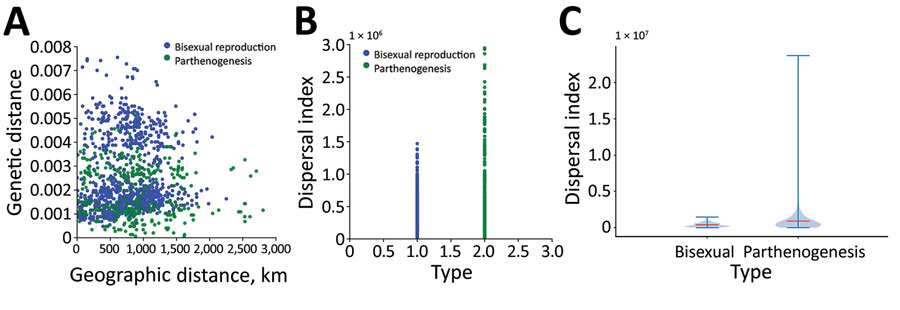Volume 28, Number 2—February 2022
Research
Rapid Spread of Severe Fever with Thrombocytopenia Syndrome Virus by Parthenogenetic Asian Longhorned Ticks
Figure 6

Figure 6. Phylogeographic analysis of bisexual and parthenogenetic Asian longhorned ticks, China. A) Distribution of bisexual and parthenogenetic Asian longhorned ticks in pairwise genetic distance and pairwise geographic distance. B, C) Distribution (B) and difference (C) of dispersal index between bisexual and parthenogenetic Asian longhorned ticks. Horizontal red line in the violin plot indicates the mean dispersal index, shaded blue areas indicate the kernel density estimation, and error bars indicate the maximum (top line) and minimum (bottom line) values.
1These authors contributed equally to this article.
Page created: September 27, 2021
Page updated: January 22, 2022
Page reviewed: January 22, 2022
The conclusions, findings, and opinions expressed by authors contributing to this journal do not necessarily reflect the official position of the U.S. Department of Health and Human Services, the Public Health Service, the Centers for Disease Control and Prevention, or the authors' affiliated institutions. Use of trade names is for identification only and does not imply endorsement by any of the groups named above.